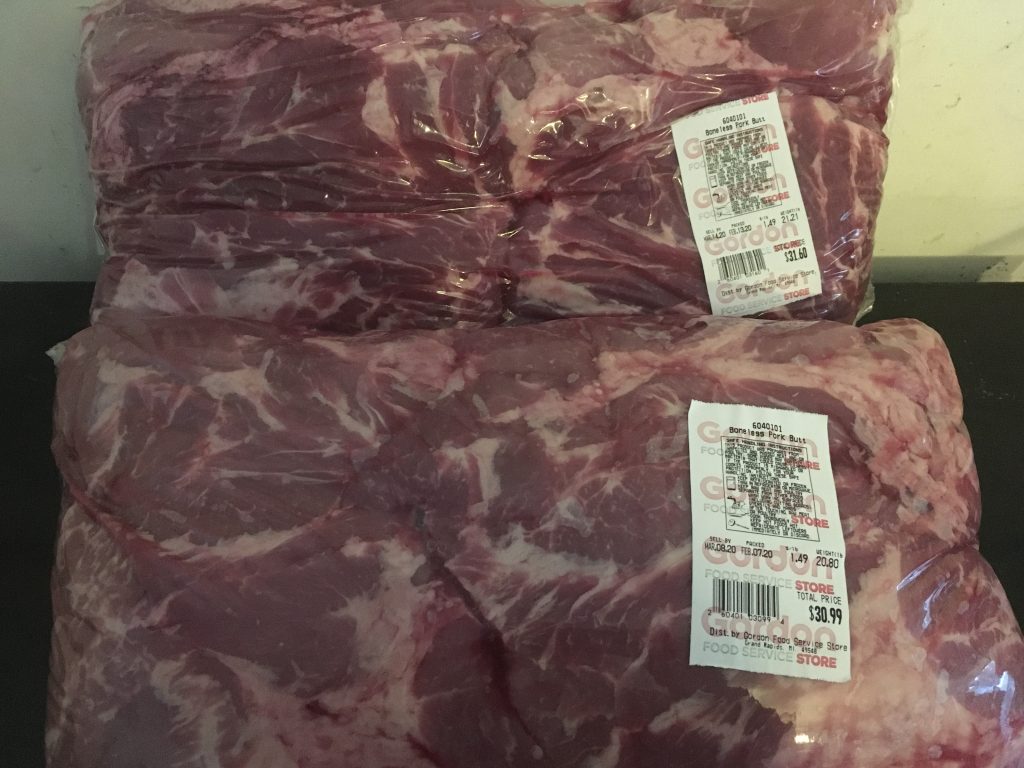
Bought 42 pounds of boneless pork shoulder butts. Took 1 1/2 pounds of lean (3.5% of starting raw weight) from the top shoulder blade area (Supraspinatus muscle) to slightly increase the sausage batch fat percentage. Estimated another 1 1/2 pounds of combined bag purge and objectionable material trim loss. 42 starting pounds minus 3 pounds of lean and other weight loss equals 39 pounds of pork in the sausage batch. My master sausage batch weight of pork is 65 pounds so I divided 39 by 65 to find an ingredient adjustment factor of .6. After non-meat ingredient adjustment I needed 11 1/4 TBSP of leaf marjoram, 5 2/3 TBSP of black pepper (4 TBSP coarse grind and 1 2/3 TBSP fine grind), 24 average size cloves of crushed garlic, 12 1/3 TBSP of purified flake salt, 3 1/2 cups of water, 3 1/2 TBSP of sausage sodium phosphate and 1 1/3 pounds (drained weight) of canned mushrooms stems & pieces.

Marjoram, pepper, garlic and 2 cups of the water slow boiled for about 3 minutes to pasteurize dry spices and mellow the garlic.
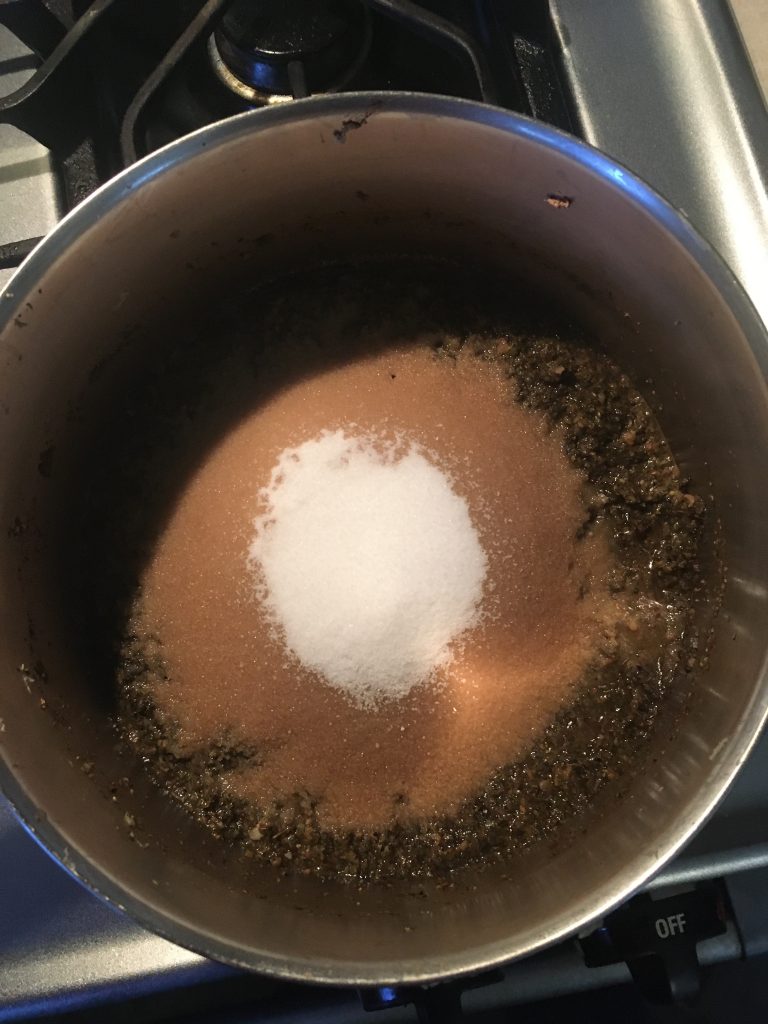
Stir in purified flake salt then chill seasoning mixture.
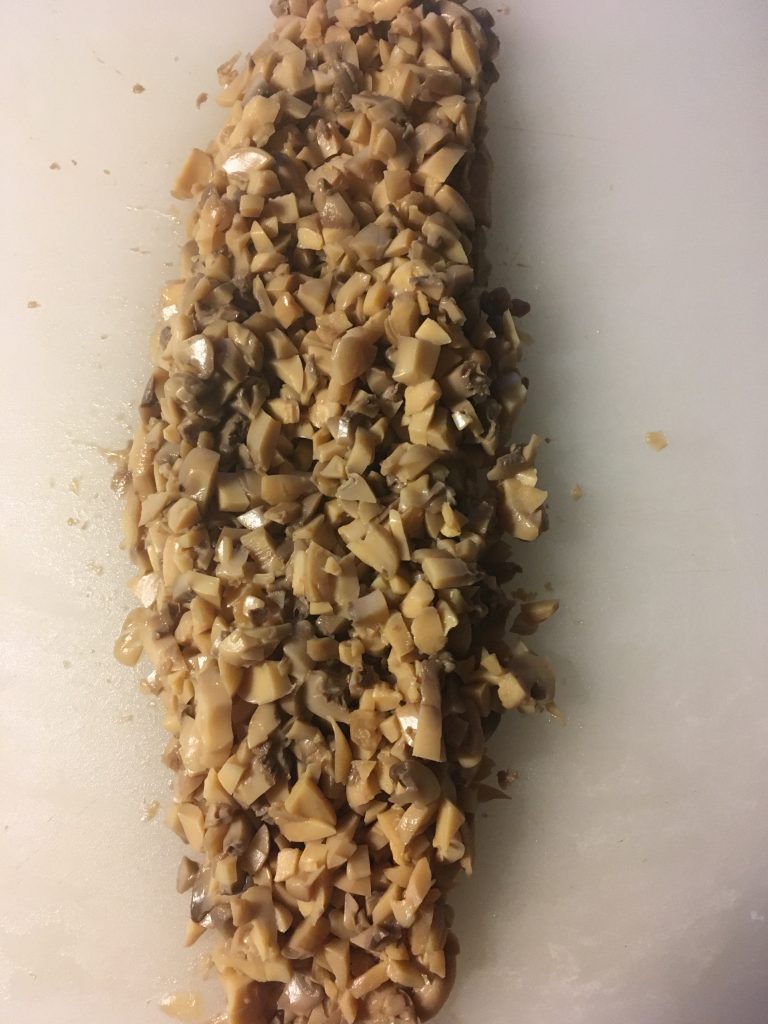
Dice canned mushroom stems & pieces then chill them well.
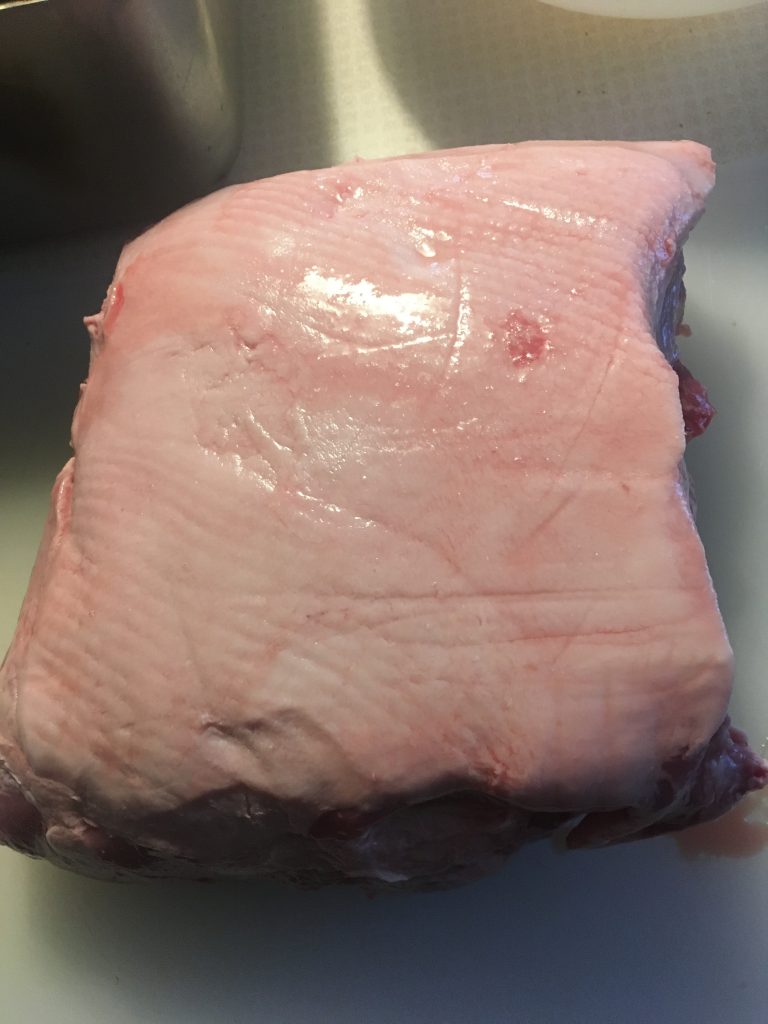
Feel for any bone-dust or bone fragments on the exterior surfaces of the butts; then fat-down the exterior.
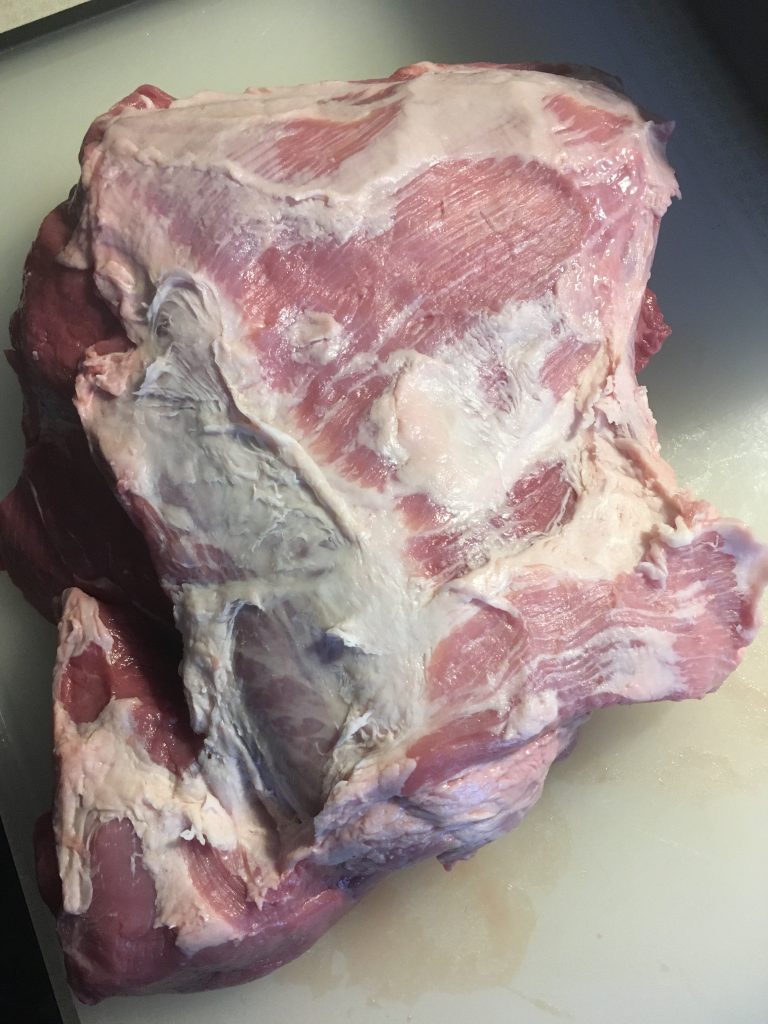
Shoulder butt fatted-down and a small piece of top-blade muscle removed in order to increase sausage batch fat percentage.
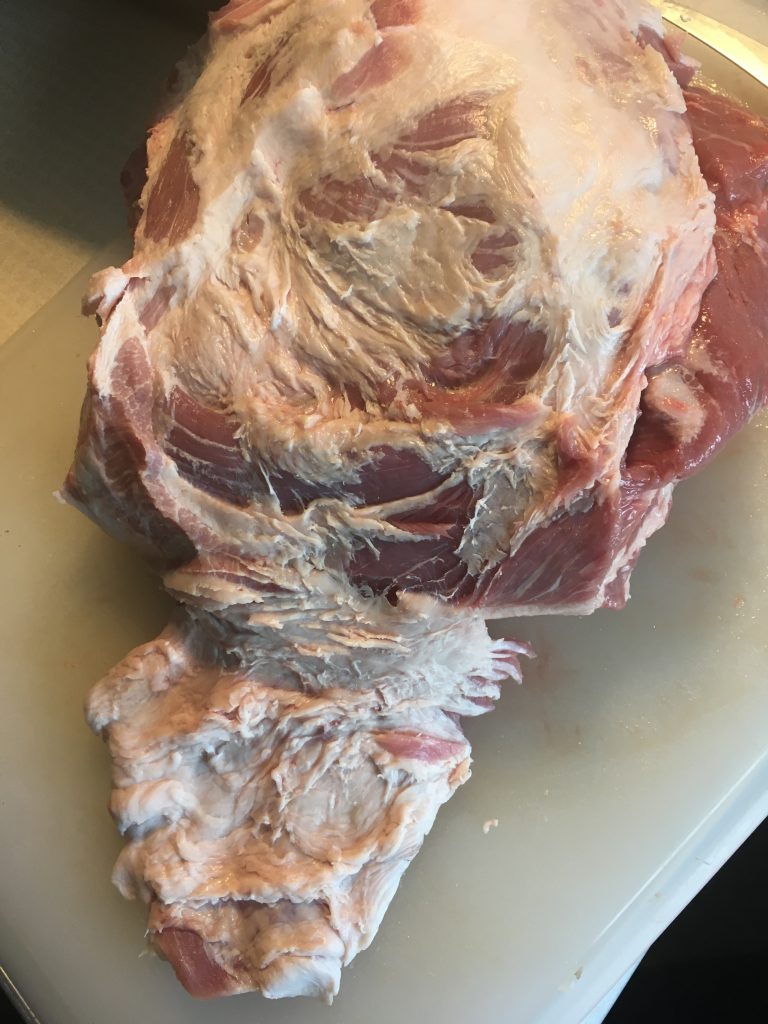
Seam off the thin cap muscle. You may be able to remove heavy fat then put the cap muscle in with your lean component. If not, throw it in with fat.
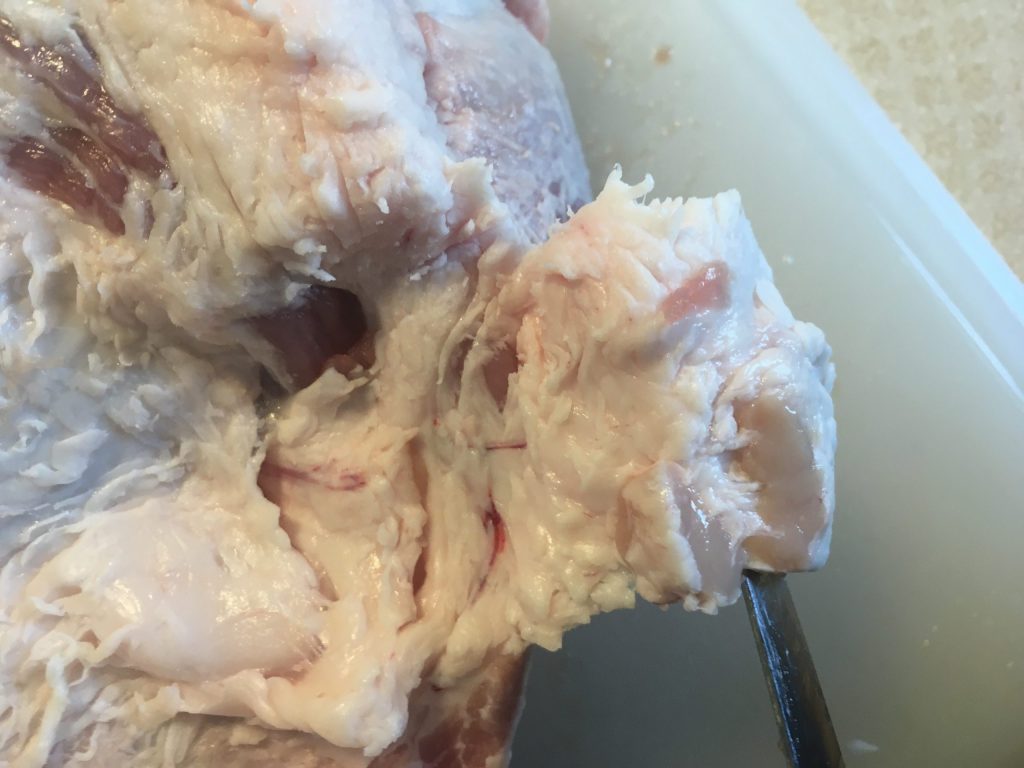
Under the cap-muscle, and on the edge of the pork shoulder butt you will find a lymph node that should be removed.

Turn the butt over and seam apart the muscle groups. That practice makes it easy to separate out heavy seam fat. While working, keep looking and felling for any neck or shoulder bone fragments that might have been left attached.
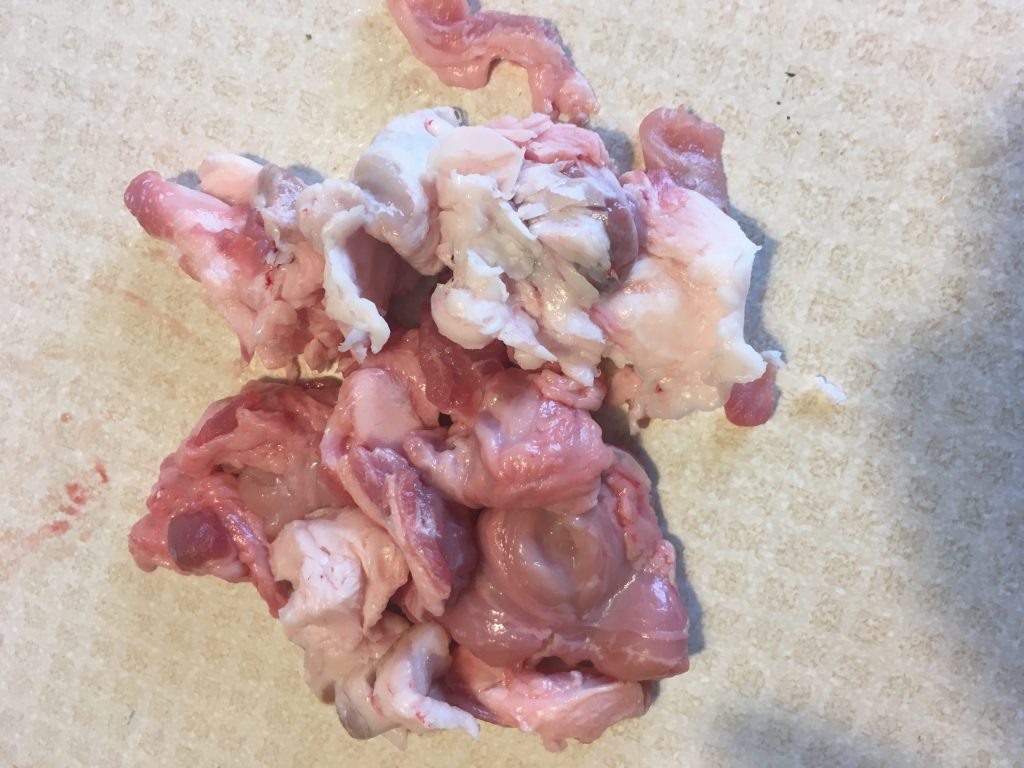
Thymus gland, lymph nodes and bone fragments that were left attached to the starting raw pork butts.
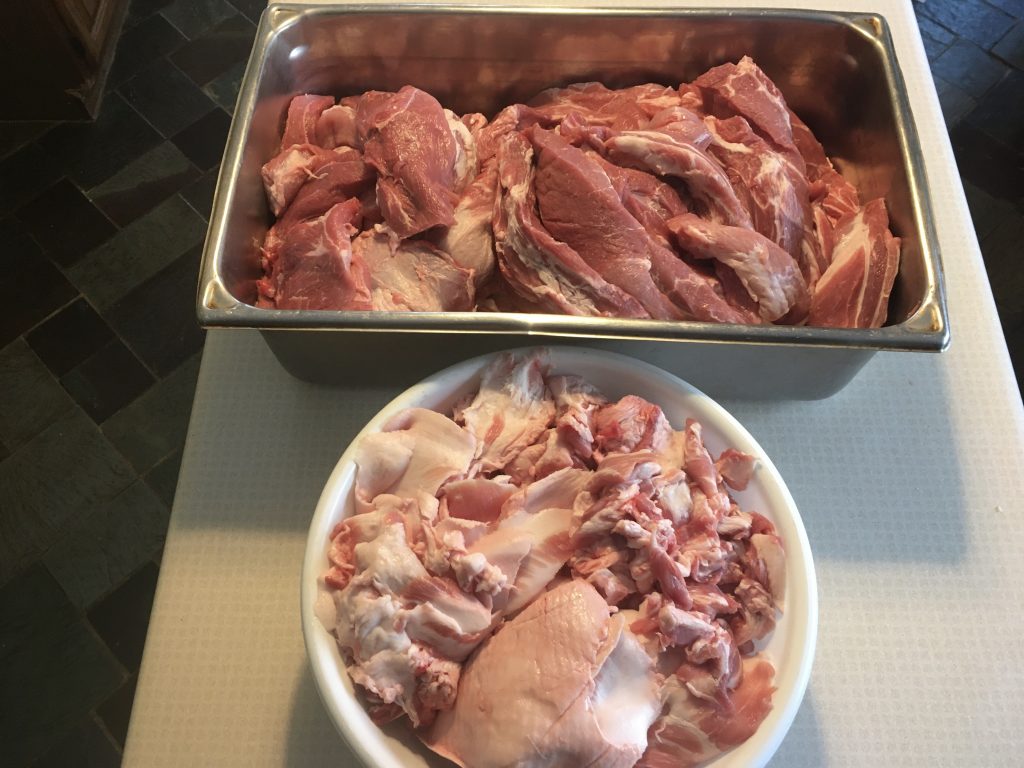
Pork separated into fat and lean batch components.

1 1/2 pounds of Supraspinatus muscles removed from the sausage batch.
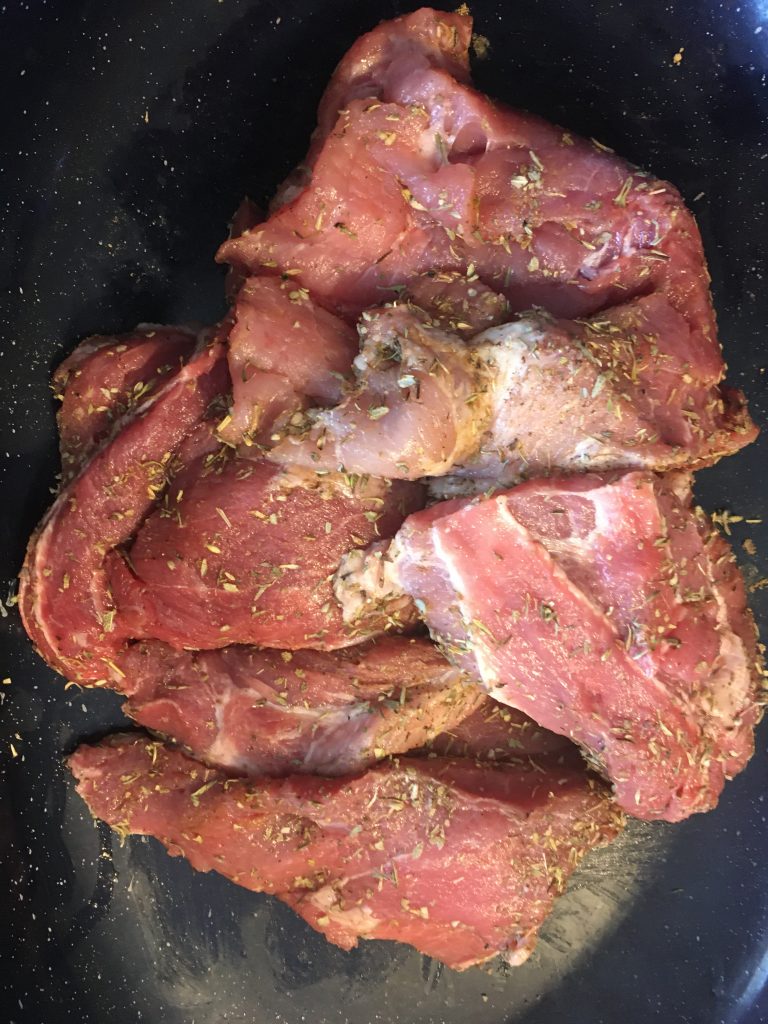
The 1 1/2 pounds of blade meat was seasoned up like breakfast sausage and braise at 275F until tender.
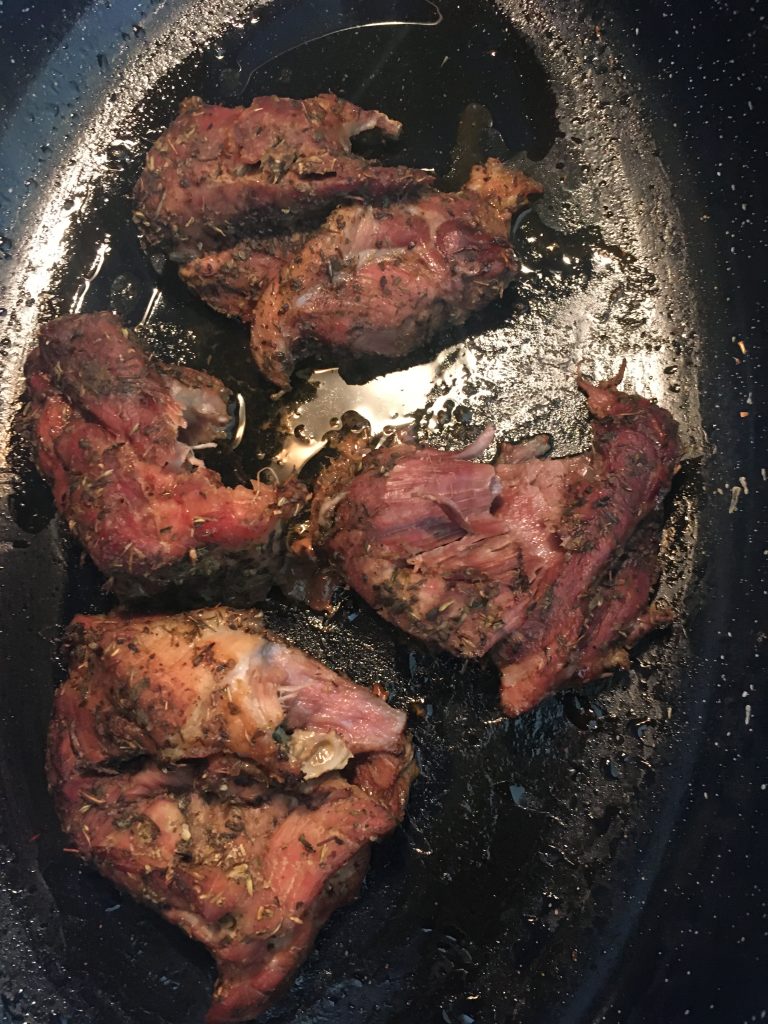
Cooked blade meat. Some had already been eaten before this picture was taken.
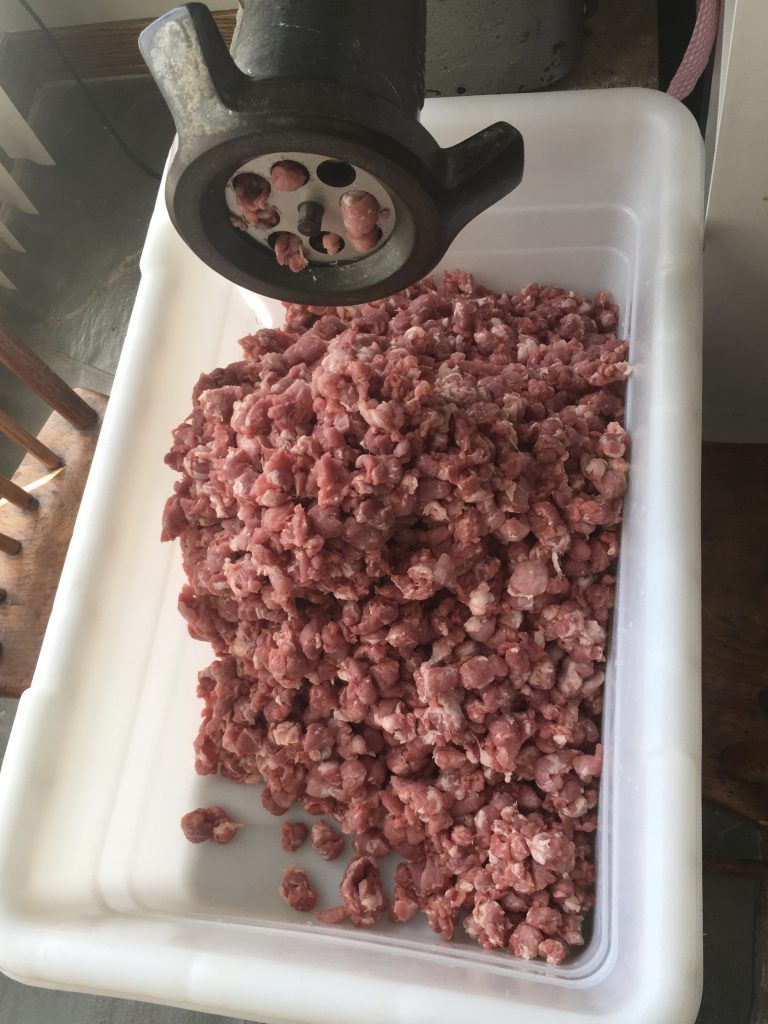
Grind all lean component once through a 3/4 inch hole-size plate.
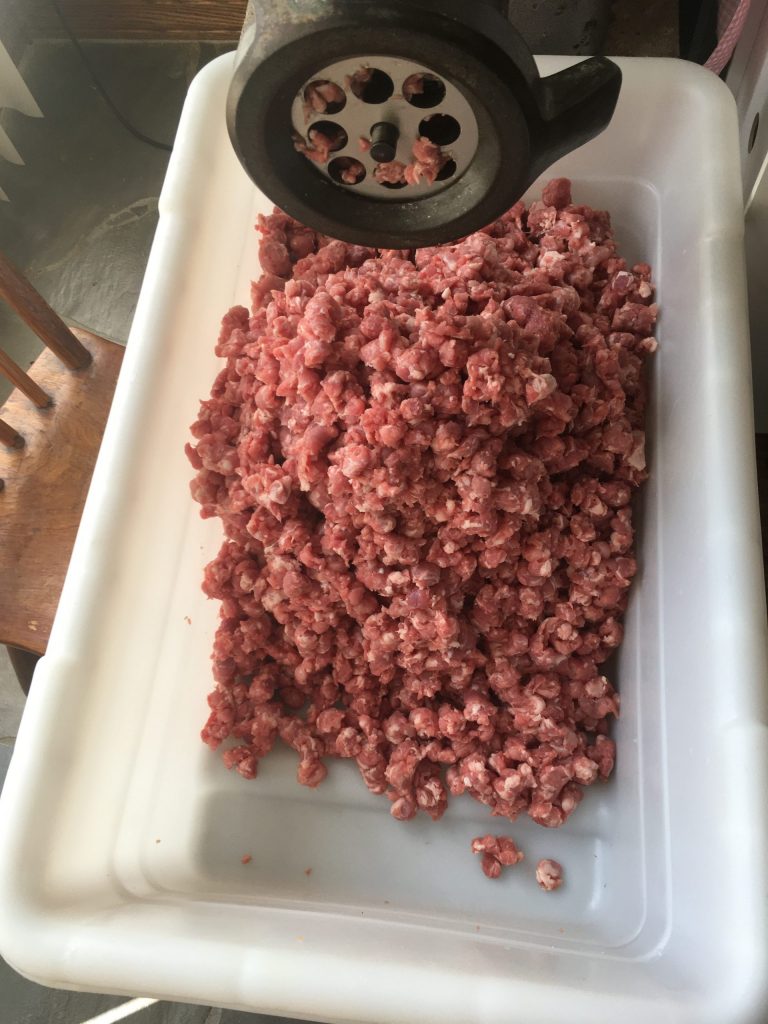
Then grind half of the lean a second time through the 3/4 inch plate.
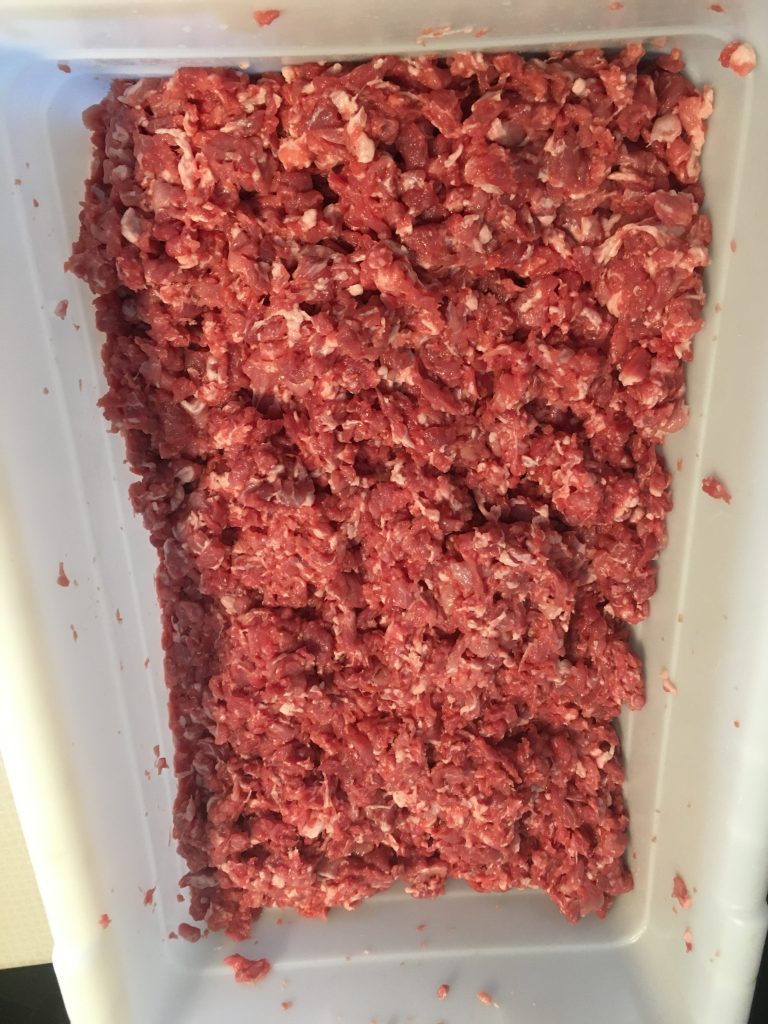
Using the last cup of water for the batch, lightly mix the sausage sodium phosphate into the lean.
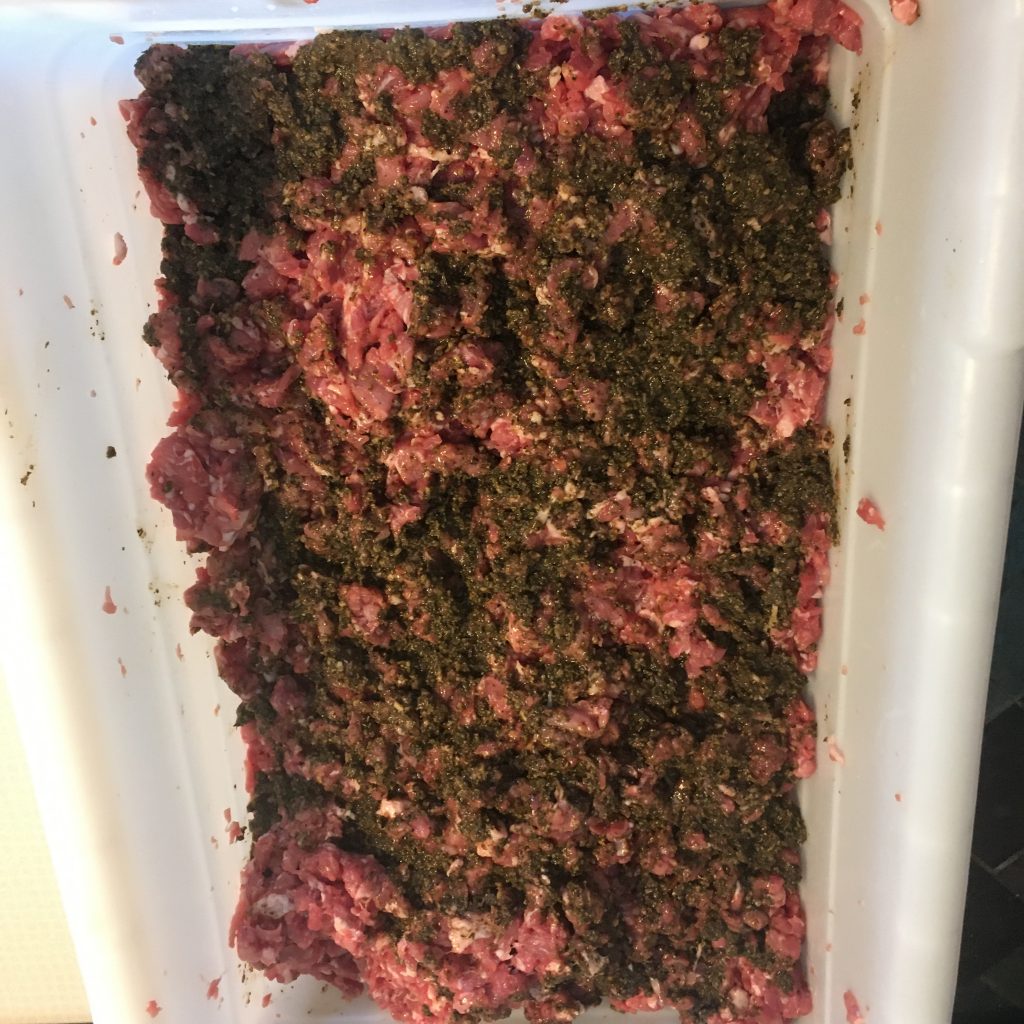
Spread the seasoning mixture fairly evenly over the lean.
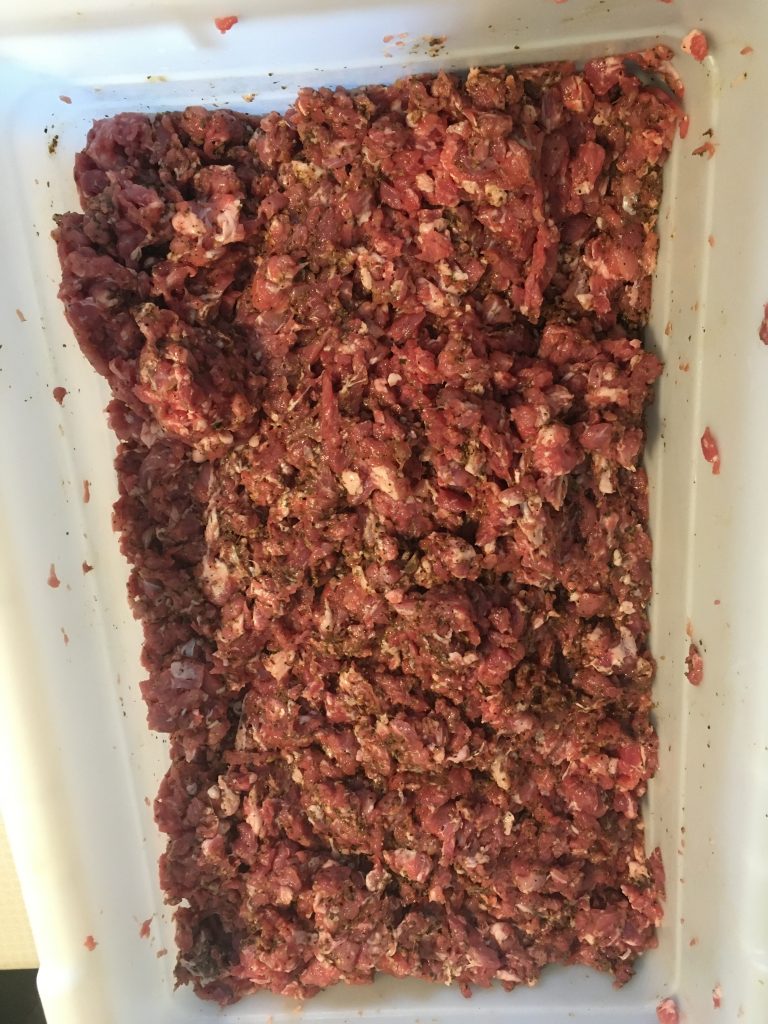
Fist and mix the seasoning into the lean for a few minutes.
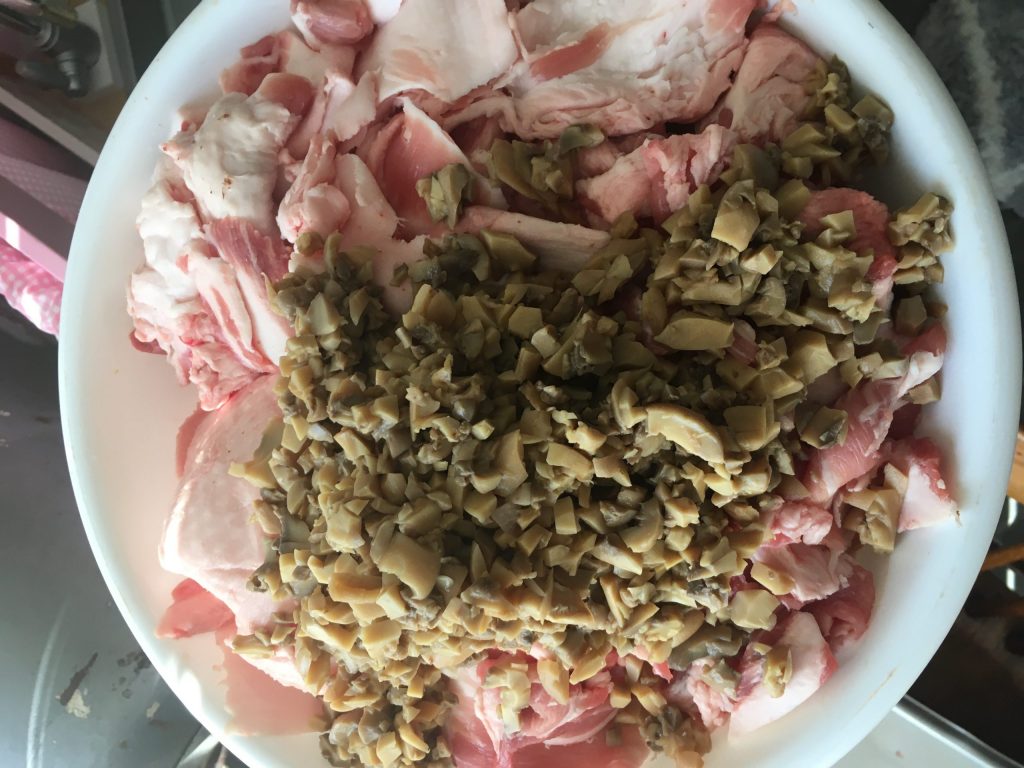
Place the chilled mushrooms on top of the chilled fat.
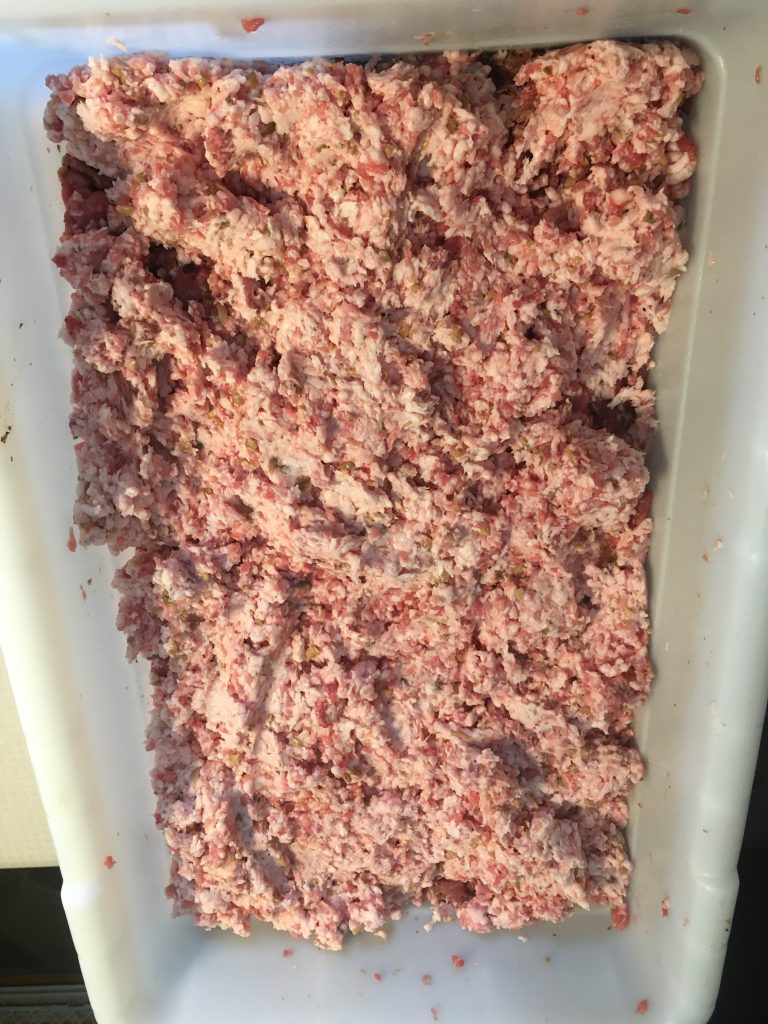
Grind the fat and mushrooms once through a 3/16 inch plate then spread them over the lean. Use a piece or two of frozen bread at the end of grinding to help push pork and mushrooms out of the grinder head.
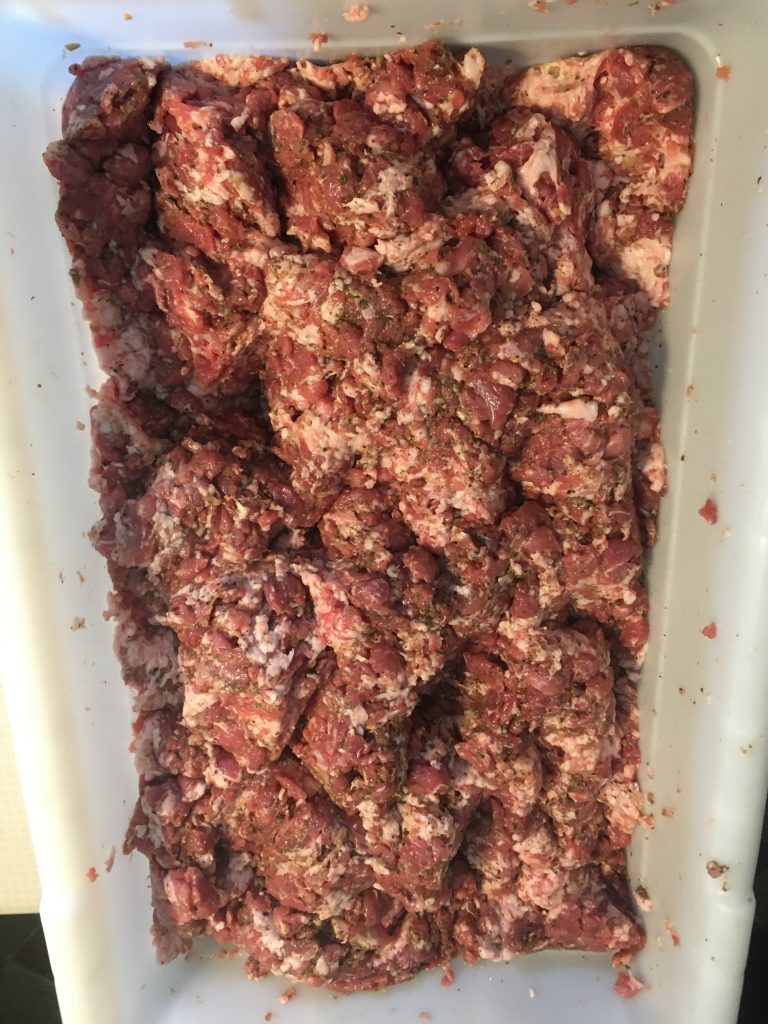
Fist the fat straight down until a good bit of the seasoned lean is worked towards the top.
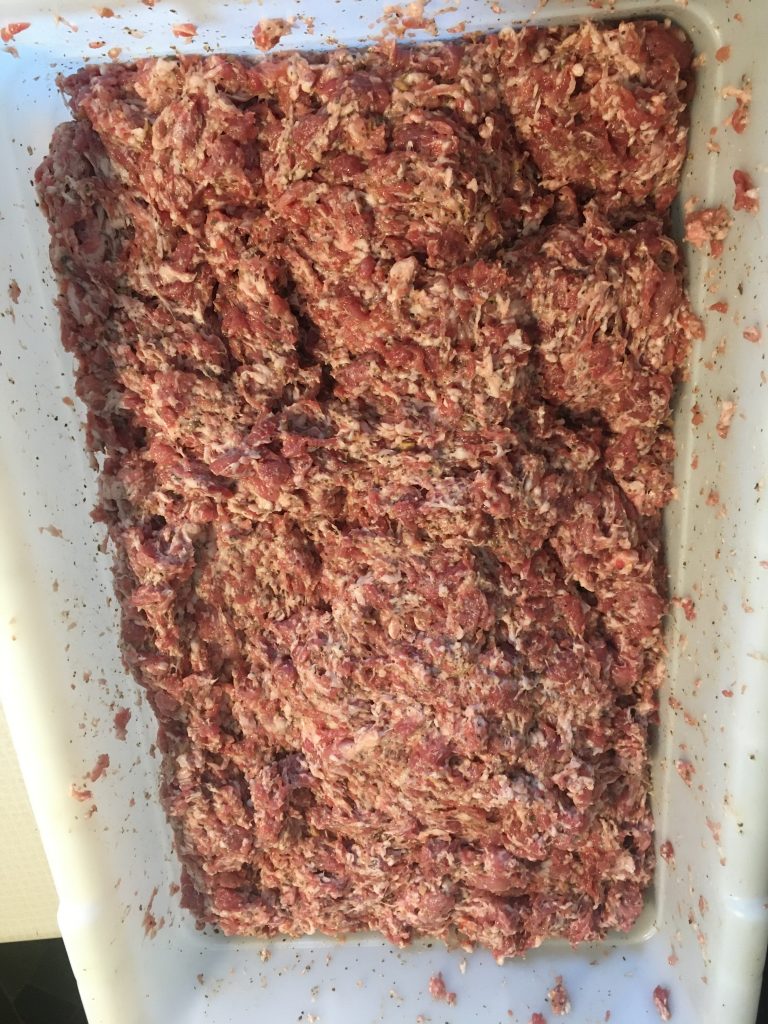
Mix the batch well; until it becomes somewhat sticky.
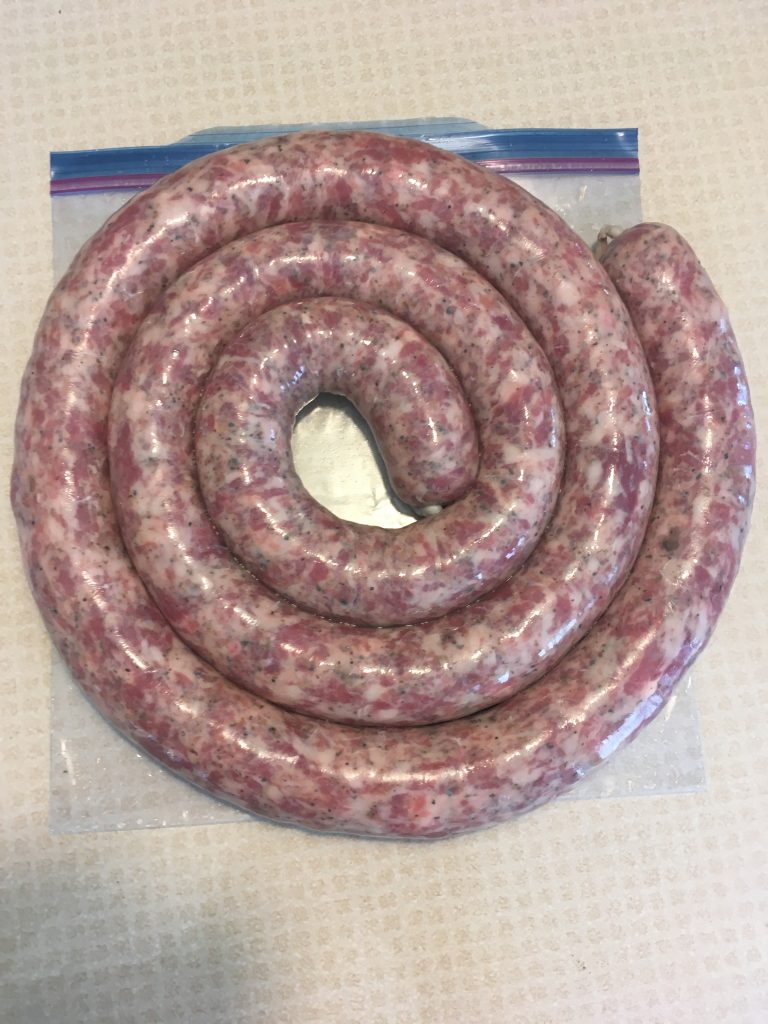
You can stuff these sausage coils tightly because they are not being twisted into links. I use a gallon size plastic bag as an indicator of how much sausage will fit in a bag.
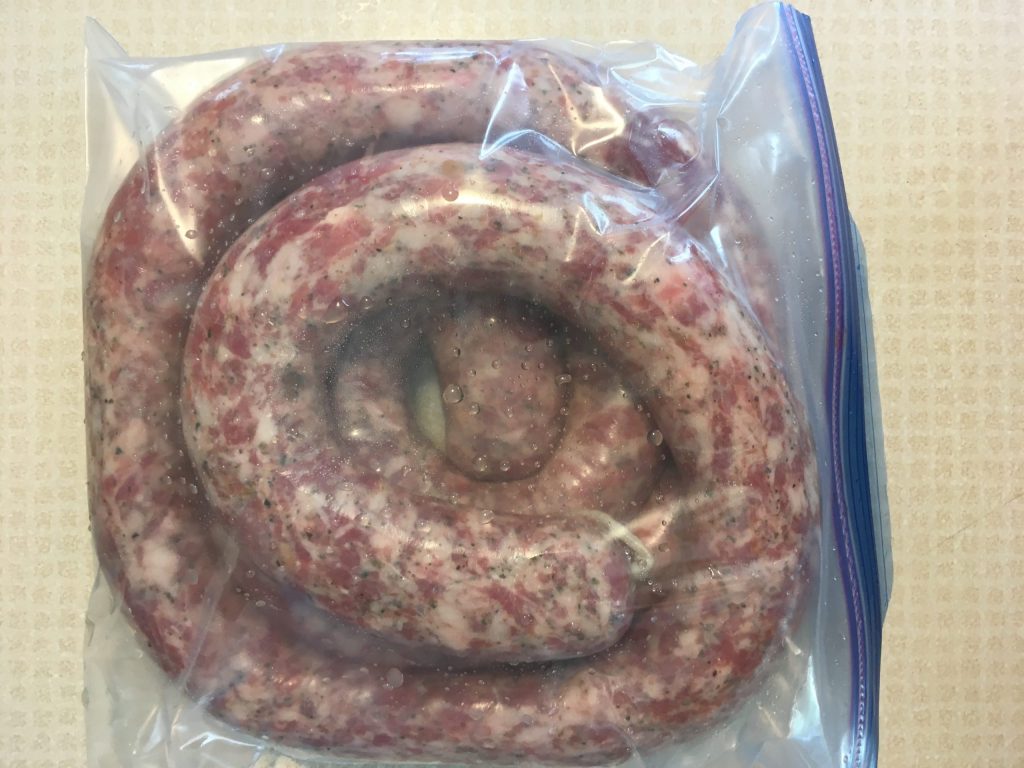
Same coil sealed in a gallon plastic bag.
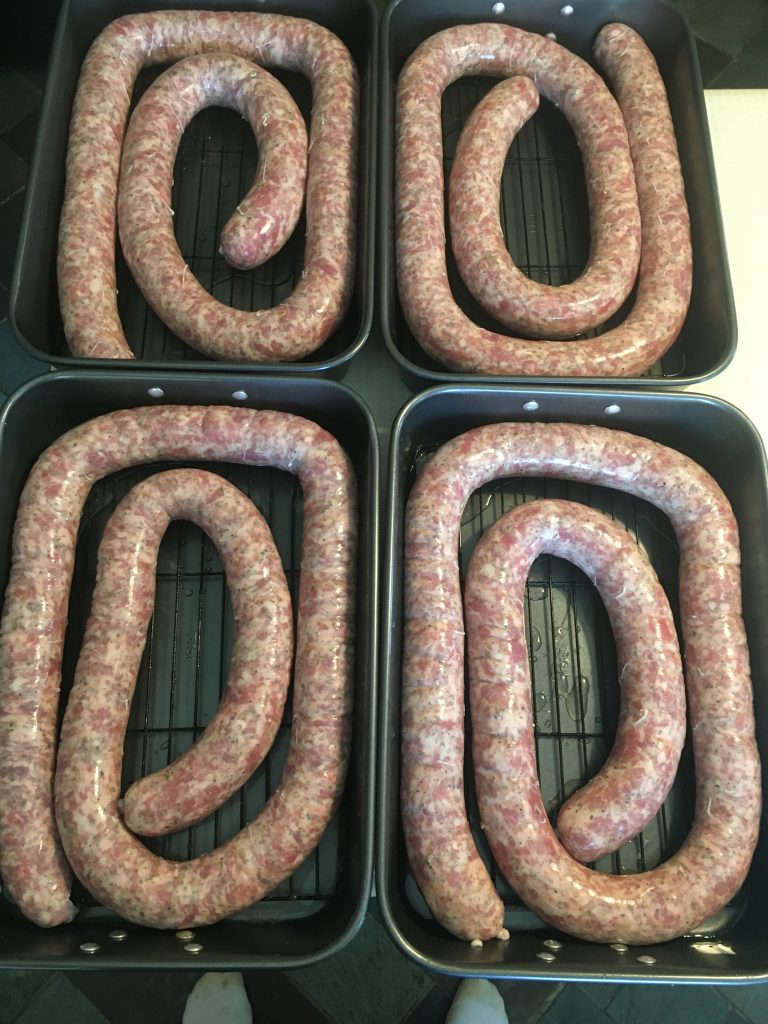
Same lengths of coils on racks in roasting pans. There is a little bit of water in the bottom of the roasting pans to facilitate steam generation. You could also add a little liquid smoke to the water.
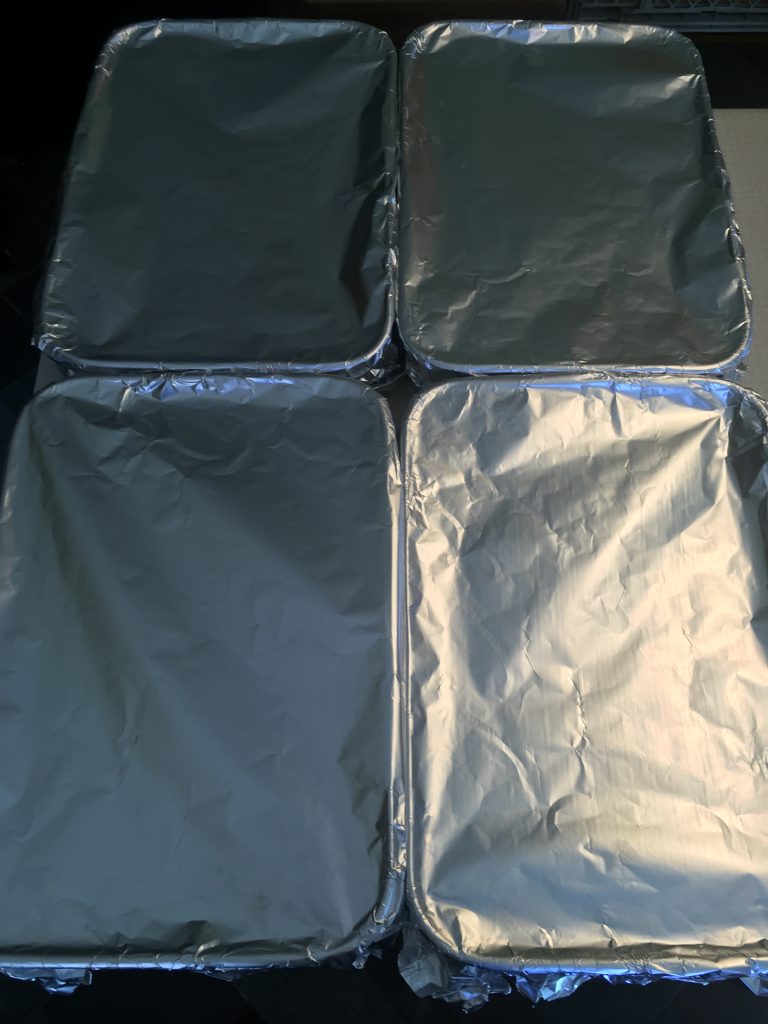
Four roasting pans covered tightly with wide aluminum foil. Cook on two racks in the oven at 225F for about 2 hours. Rotate the bottom sausage to the top rack after one hour. Sausage is optimally done when casings are about to to split open.
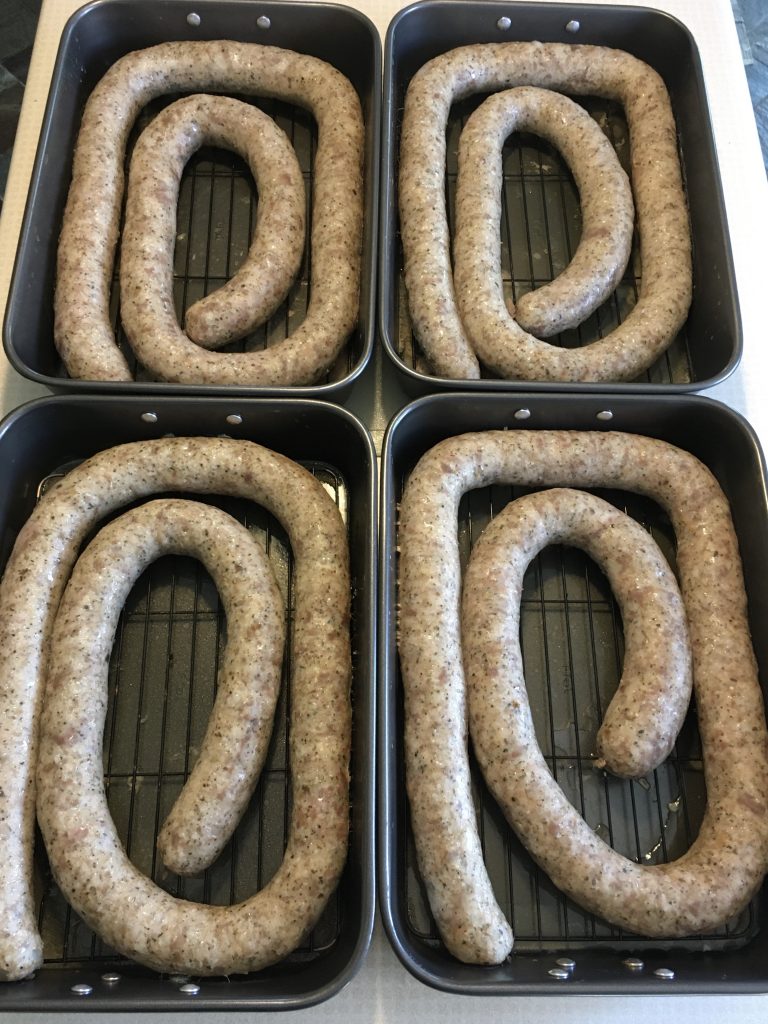
Precooked sausage coils.
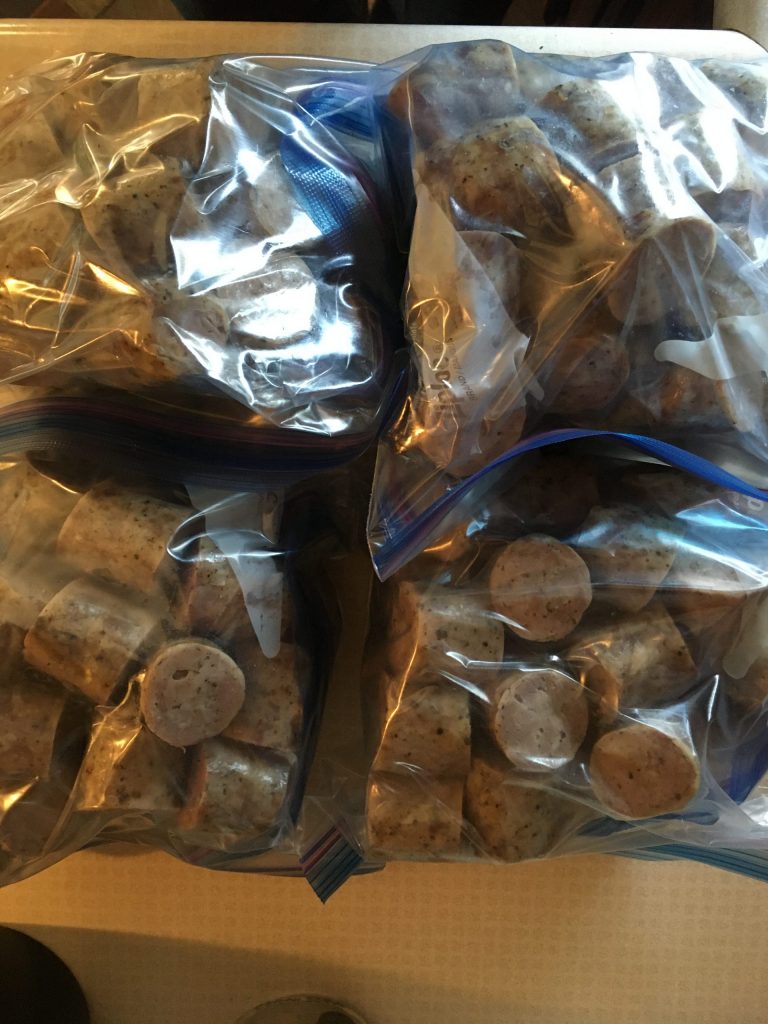
Precooked Fresh Kielbasa cut into short lengths and double bagged for freezer storage. This precooked item remains in high quality, in a below 0F freezer, for several months. Frozen pieces are easy to knock apart; so entire bags do not need to be thawed at once.
